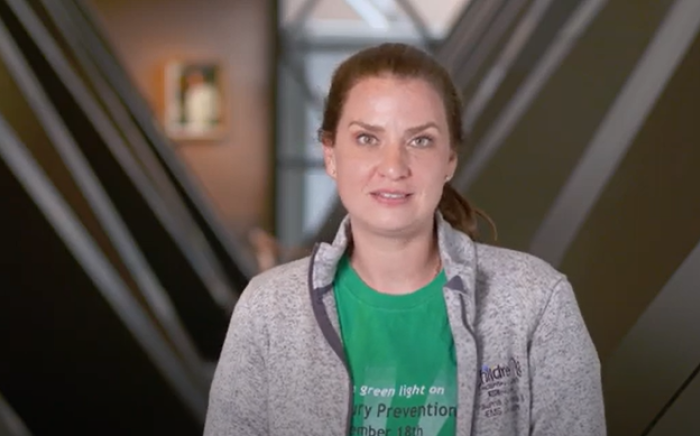What is the Treatment for Facial Paralysis?
Facial palsy is a complex condition. At St. Louis Children’s Hospital, we provide comprehensive care to children with facial paralysis through a multidisciplinary team approach. Initial consultation is often with the reconstructive surgeon, Dr. Alison Snyder-Warwick. Consultations with other teams may be beneficial including:
- Ophthalmology
- Speech pathology
- Physical and Occupational therapy
- Neurology
- Otolaryngology
- Developmental psychology
There is a wide spectrum of helpful therapies for the child with facial paralysis. Consideration is given to the cause and duration of the facial paralysis, potential for improvement, the overall health of the child, and the desires of the child and his or her family. Treatment is tailored specifically for the individual child. Management of facial paralysis may or may not involve surgery. In cases of new onset facial paralysis, a course of steroids and anti-viral medication may be indicated. Today, there are many modalities available to assist a child with facial paralysis. Physical therapy, massage, and chemodenervation (botulinum toxin) may provide benefit in certain scenarios, either alone or in combination with surgery.
We attempt to prevent or manage the functional consequences resulting from facial paralysis. For infants, feeding may be difficult initially. We use special techniques, many borrowed from our experience treating babies with cleft lip and/or cleft palate, to help in feeding infants early on (see feeding an infant with cleft lip and palate). For all children, great care must be taken to protect the eye from increased exposure due to poor eyelid movement. Lubricating drops and ointment are frequently used, and sometimes more protective techniques are employed. Surgery may be necessary for eye protection alone in certain circumstances.
The cause and duration of loss of facial movement is important to determine the optimal method of reconstruction. When facial paralysis has been present since birth (congenital), the facial nerve and facial muscles may not have developed appropriately or may be absent. Attempting to provide a new nerve source to these muscles, then, is not logical or possible, but other types of reconstruction are possible. In cases related to an injury, the facial nerve and muscles may be present and of normal structure, just not in continuity.
After a muscle loses its nerve supply (from any cause), there is a critical window of about 12-24 months to supply a nerve source to that muscle. After this window of opportunity, the muscle is not able to accept a nerve. In these conditions, a nerve supply as well as new muscle must be provided.
There are many possibilities for reconstruction after facial paralysis.
- Static reconstructions provide support and improve balance, but do not move.
- Dynamic reconstructions provide movement.
- Nerve grafts or nerve transfers may provide a nerve source to fire a muscle
- Muscle transfers can provide a new muscle source when the original facial musculature is not able to be reconstructed.
- Reconstructions are considered by facial region:
- Brow elevation
- Eye closure
- Nasal function
- Smiling
- Lip depression
- Many modalities may be used for reconstruction and these may vary by region of the face.
- To date, the best dynamic reconstruction techniques available involve the ability to smile.
Reconstructions are tailored to each person’s unique circumstance. It is important to realize that facial nerve reconstructions rarely result in an appearance identical to the pre-injury state or similar to a person unaffected by facial paralysis, although this is the goal. While it is not possible to recreate all of the intricate movements of facial expression, many excellent techniques are available for smile reconstruction. Reconstructions do typically improve facial function, balance, and appearance, although success is never guaranteed. Achieving greater symmetry and the individual’s personal goals are emphasized.












